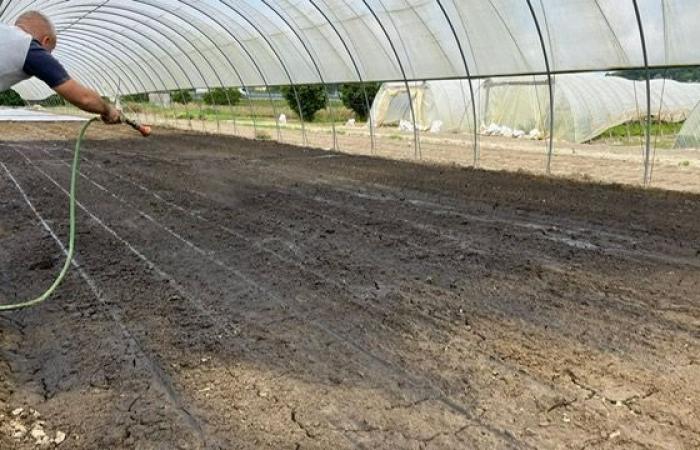The solarization pilot project applied to a portion of the horticultural surface of the Igino Scanavino agricultural company of Motta in Costigliole d’Asti has started again in the Asti area, and with a specific improvement. This is a technique that has been used since the 1970s but which, only now, exploits some natural improvements to increase its effectiveness.
Already widely tested in the south, but unique in Piedmont, the project is carried out by the University of Agricultural, Forestry and Food Sciences of Turin in collaboration with Crea of Caserta, as part of the activities of the National Agritec Center financed by the Pnrr. The landing in the Asti area was possible thanks to the intervention of the Coldiretti Asti Technical Manager Antonio Bagnulo.
“In addition to the climate and, in many cases, as a consequence of it, the main threats to repeated horticultural crops on the same plots are represented by fungal diseases that attack the roots, especially peppers” explains Igino. This is why Igino welcomed the pilot project which will allow him to reduce/eliminate the intervention of chemical and synthetic products and, equally, to naturally fight the growth of weeds, safeguarding his vegetables.
The Unito teacher Vladimiro Guarnaccia, who is involved in the project for the second consecutive year, explains to us what the solarization technique consists of. “As part of the activities for the defense and protection of plants, we have embraced this new project in collaboration with Crea of Caserta, working on physical means that can replace or limit the use of chemical synthesis. Thanks to the improvements introduced on the technique in question, a significant reduction of fungal inoculants living in the soil, therefore of telluric pathogens, is achieved. With respect to pepper, the objective is to counteract pedal gangrene caused by the oomycete Phytophthora capsici”.
What does the applied improvement consist of? “In the film used, which is an innovative polisolar capable of improving the transmission of heat within the first layer of the soil, and in the vegetal carbon which, in a natural way, once distributed on the ground, attracts more solar rays and favors the soil warming. Thanks to the high temperatures reached (over 38° C) it is possible to eliminate pathogens. At the same time, the effect on non-targets is also evaluated, with molecular analyses, to monitor whether the communities of microorganisms that reside in the soil, but which do not play a role in the development of plant diseases, also undergo variations”.
“Subject to monitoring, via control units and remotely, after approximately 15/20 days it will be possible to remove the film and allow Igino to plant his vegetables on a surface which, for a few years, will be geodisinfested, according to a sustainable low-impact principle economic and environmental, on crops with limited geographical extension” concludes Bagnulo.
“Coldiretti Asti always welcomes projects that bring benefits to crops, in particular when they involve actions of effective environmental and economic sustainability which, in some cases, also become social” conclude the President of Coldiretti Asti Monica Monticone and the Director Giovanni Rosso . “The hope is that the pilot project can soon be transformed into a practice for everyone, given that the active ingredient is already on the market”.





